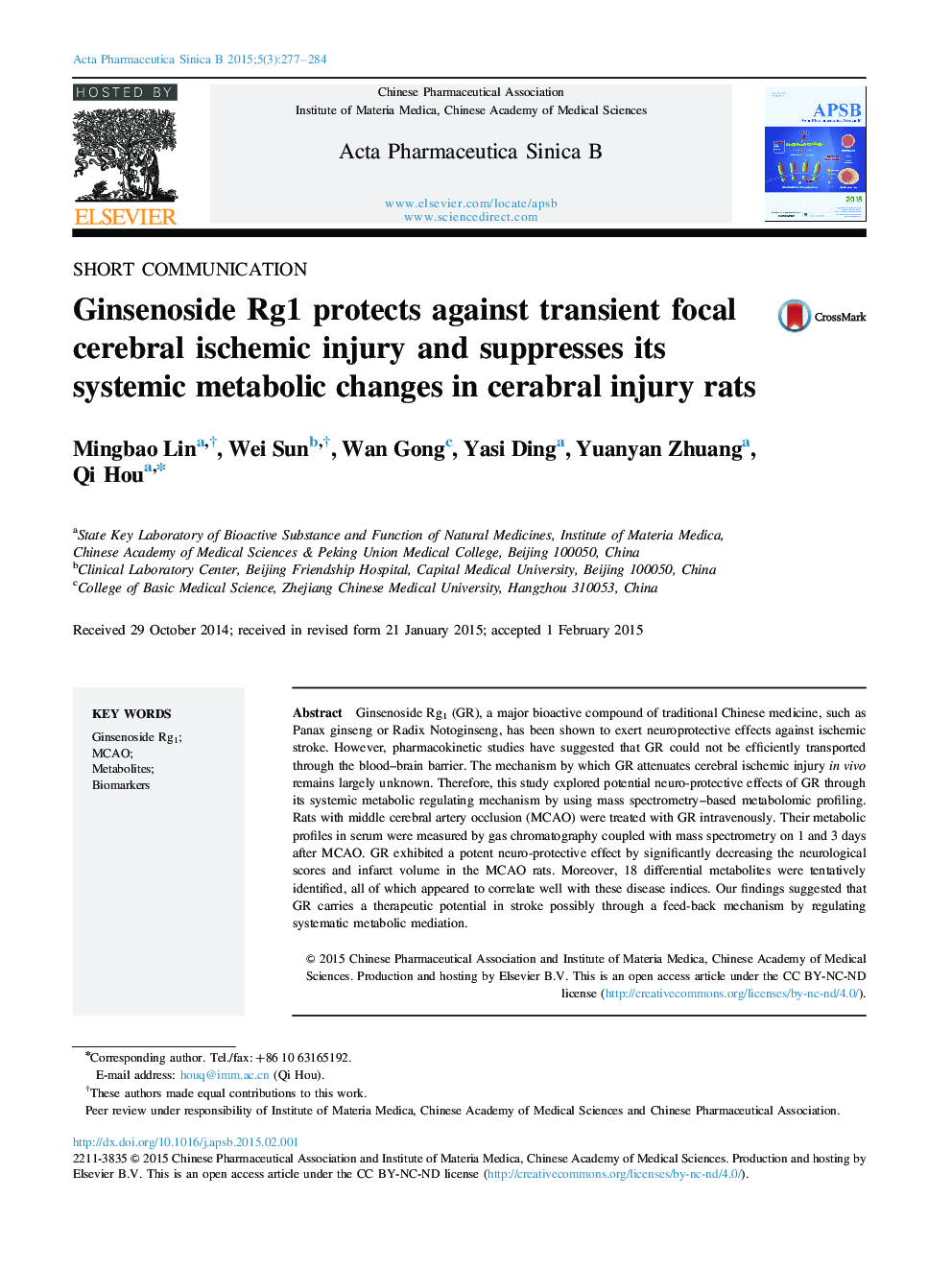| Article ID | Journal | Published Year | Pages | File Type |
|---|---|---|---|---|
| 2474542 | Acta Pharmaceutica Sinica B | 2015 | 8 Pages |
Ginsenoside Rg1 (GR), a major bioactive compound of traditional Chinese medicine, such as Panax ginseng or Radix Notoginseng, has been shown to exert neuroprotective effects against ischemic stroke. However, pharmacokinetic studies have suggested that GR could not be efficiently transported through the blood–brain barrier. The mechanism by which GR attenuates cerebral ischemic injury in vivo remains largely unknown. Therefore, this study explored potential neuro-protective effects of GR through its systemic metabolic regulating mechanism by using mass spectrometry–based metabolomic profiling. Rats with middle cerebral artery occlusion (MCAO) were treated with GR intravenously. Their metabolic profiles in serum were measured by gas chromatography coupled with mass spectrometry on 1 and 3 days after MCAO. GR exhibited a potent neuro-protective effect by significantly decreasing the neurological scores and infarct volume in the MCAO rats. Moreover, 18 differential metabolites were tentatively identified, all of which appeared to correlate well with these disease indices. Our findings suggested that GR carries a therapeutic potential in stroke possibly through a feed-back mechanism by regulating systematic metabolic mediation.
Graphical abstractThe paper demonstrates that the systemic metabolites was significantly differentiated by cerebral ischemic injury, and Rg1 exhibited its neuro-protective effects by a potential systemic feed-back regulating mechanisms.Figure optionsDownload full-size imageDownload as PowerPoint slide
